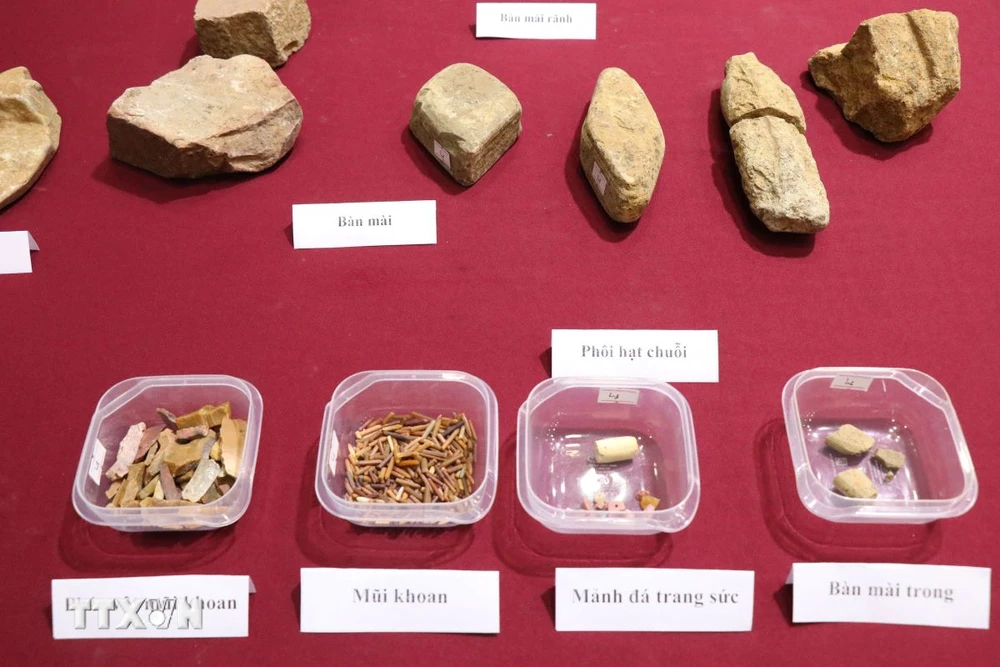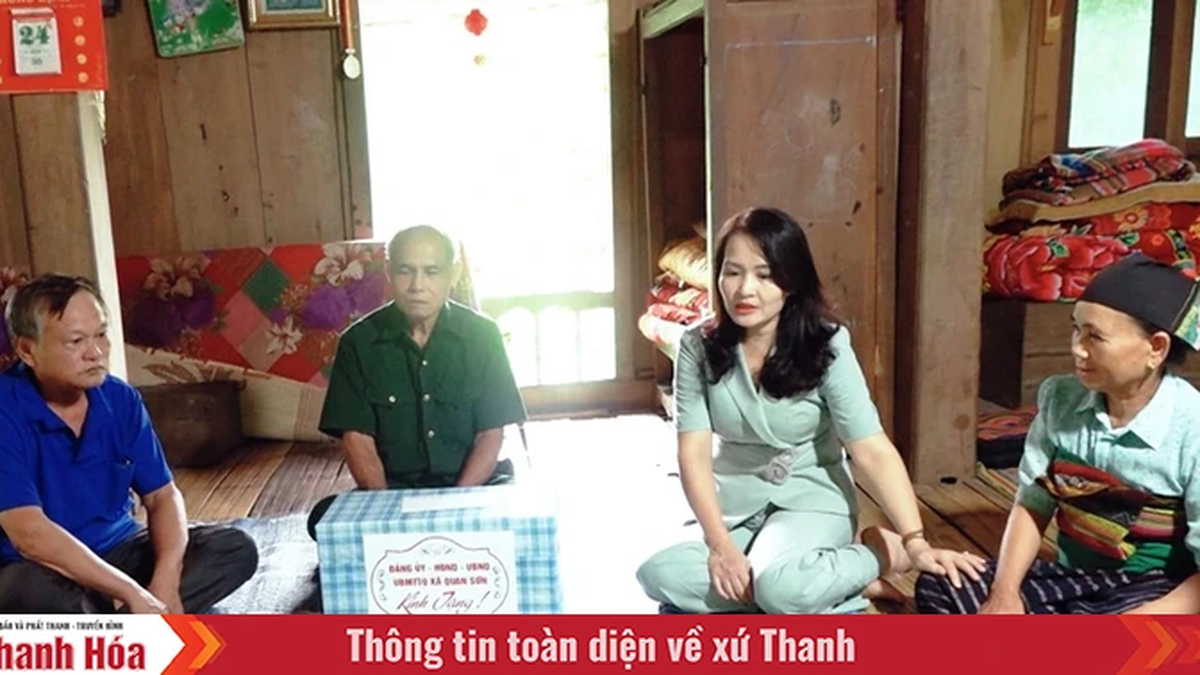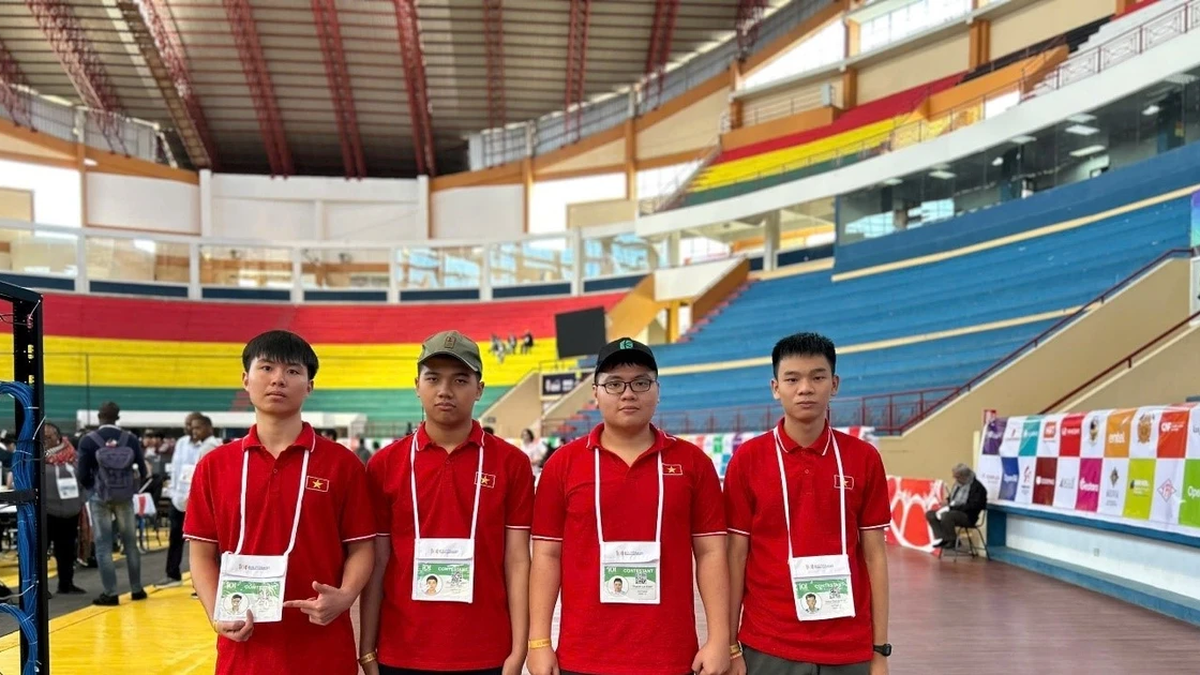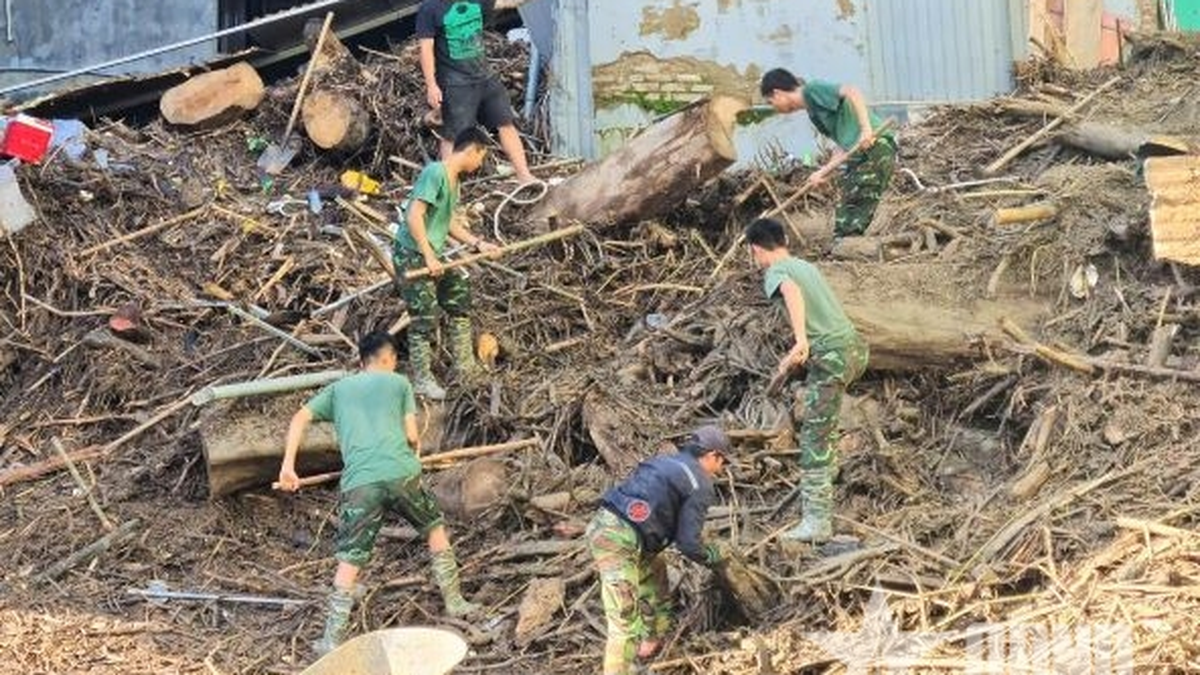
On the afternoon of September 13, Dak Lak Provincial Museum held a conference to report on the preliminary results of the excavation of Thac Hai archaeological site in village 6, Ia Jloi commune, Ea Sup district, Dak Lak province. This is the third excavation of Thac Hai site, discovering more than 1,388 artifacts, including many new discoveries of great value in archaeology as well as history and culture of residents in the Prehistoric period.
Reporting at the conference, Master Tran Quang Nam, Deputy Director of Dak Lak Provincial Museum, said: The third excavation will take place from June 26 to July 28, 2024 on an excavation pit area of 20 square meters.
The excavation process has collected rich relics and artifacts with important scientific information, with many new points compared to the two previous excavations, contributing to clarifying the cultural content and nature of the Thac Hai site.
Among them, stone objects are the main relics, the largest number of which are collections of drill bits, grinding tables, axes, knife fragments, pots and pedestals. Pottery, including mouth pieces, body pieces, bottom pieces, bases of various types of containers and burial objects in burial clusters.
In particular, 5 spinning rods were discovered next to the burials - this is the first time spinning rods have been discovered at archaeological sites in Dak Lak province, proving that weaving activities were common in this area. Glassware was also found in the excavation pit, mostly in the form of beads.
Many artifacts such as axe tools, drill bits, pottery shards, flakes... were discovered during a survey of the surrounding area.
According to Master Tran Quang Nam, through the characteristics of the relics, artifacts and the results of C14 dating analysis, archaeologists determined that the Thac Hai site is located in the time frame from about 4,000 years to about 2,000 years ago, existing for more than 1,000 years. Through the overall relics and artifacts, it can be seen that Thac Hai is a complex relic, having the characteristics of a residence, a burial site, and a large-scale stone drill bit manufacturing workshop.
Besides its scientific and technical values, the collection of rock drills at Thac Hai is also a valuable source of information for learning about the trade network, exchange and cultural exchange in the Central Highlands during the Prehistoric period.
The Thac Hai stone drill collection is characterized by the fact that most of them have never been used, thus they were products intended for export elsewhere. This suggests the possibility of learning about the exchange network between stone processing workshops during the Pre-Protohistoric period in the Central Highlands in particular and Southeast Asia in general.
According to Mr. Dinh Mot, Director of Dak Lak Provincial Museum, up to now, Thac Hai is the archaeological site with the thickest cultural layer in Dak Lak in particular and the Central Highlands in general, demonstrating long-term and continuous residence for more than 1,000 years, and at the same time, this is considered the only stone drill bit manufacturing workshop in the Central Highlands up to now.
In this third excavation, although only excavating in a small area, some new points were discovered compared to the previous two excavations such as: For the first time, spinning plumb bobs were found in the cultural layer, revealing many unfinished and completed pieces of stone jewelry, broken pieces, thereby suggesting the possibility of stone jewelry production activities in Thac Hai. This is one of the significant discoveries for the study of Dak Lak in particular and the Central Highlands in general.
According to Mr. Dinh Mot, from the practice of surveying and excavating in the past time, it is seen that continuing to excavate and handle the relocation of relics and artifacts at Thac Hai site is extremely necessary, in order to collect and relocate at the highest level the relics and artifacts underground of Thac Hai site in the face of the great risk of being wiped out by floods from Ea H'leo river in the rainy season.
On that basis, we can propose effective solutions in the conservation and promotion of archaeological heritage in particular and cultural heritage of Dak Lak province in general in the coming time in the most effective way.
The Thac Hai archaeological site located in village 6, Ia J'loi commune, Ea Sup district, Dak Lak province was discovered in 2020. The site was jointly excavated twice by the Dak Lak Museum and the National Museum of History, from 2021 to 2022, with thousands of artifacts discovered.
In particular, the most special is the "Thac Hai Stone Drill Collection" consisting of 250 artifacts, dating back about 4,000-3,000 years ago, with unique historical and cultural values, becoming the first collection of artifacts in Dak Lak province to be recognized as a National Treasure according to Decision No. 73/QD-TTg, dated January 18, 2024 of the Prime Minister./.
Source: https://www.vietnamplus.vn/nhieu-phat-hien-moi-tai-di-chi-thac-hai-dak-lak-post976653.vnp


































































































Comment (0)